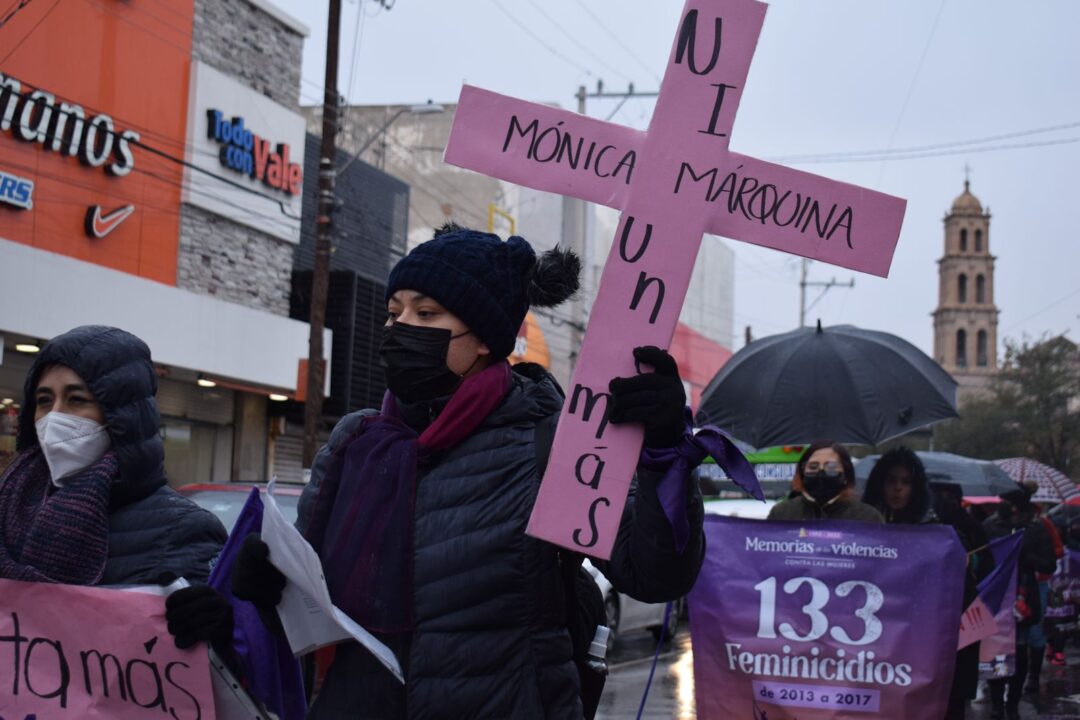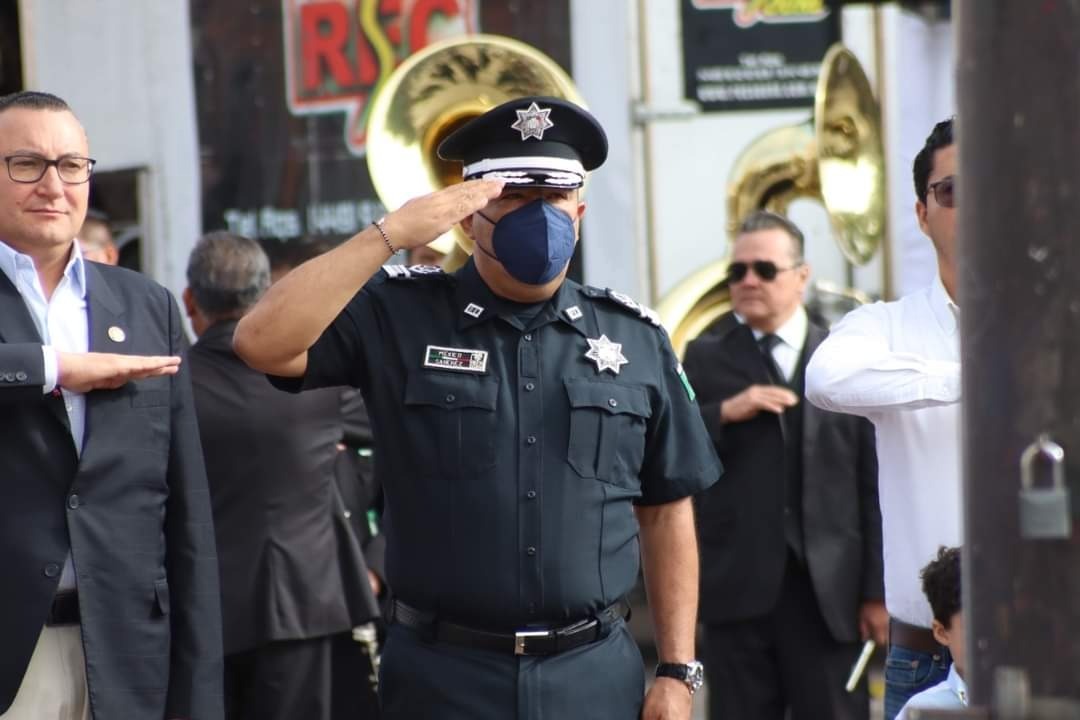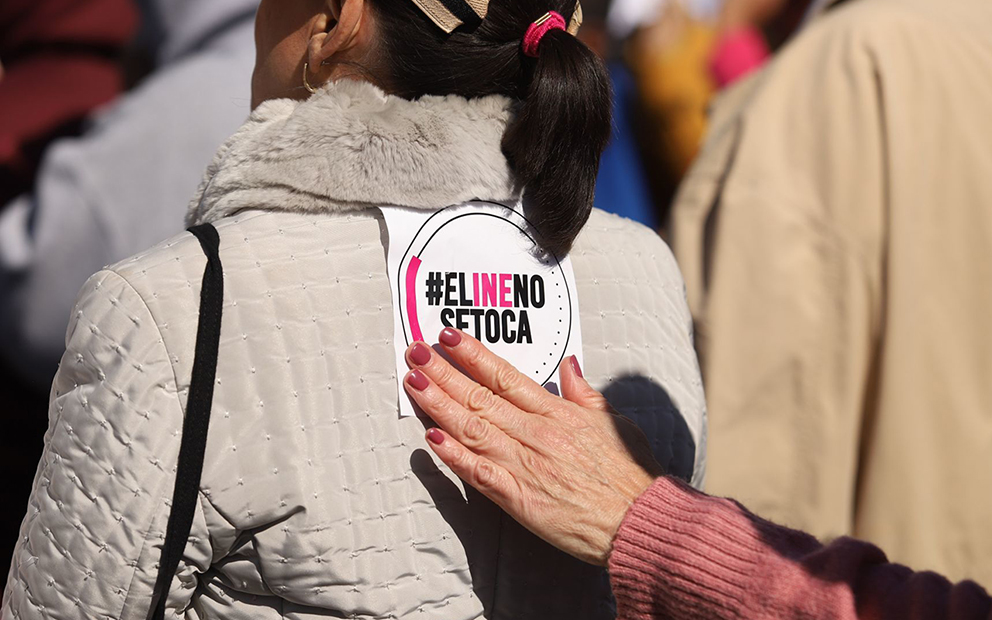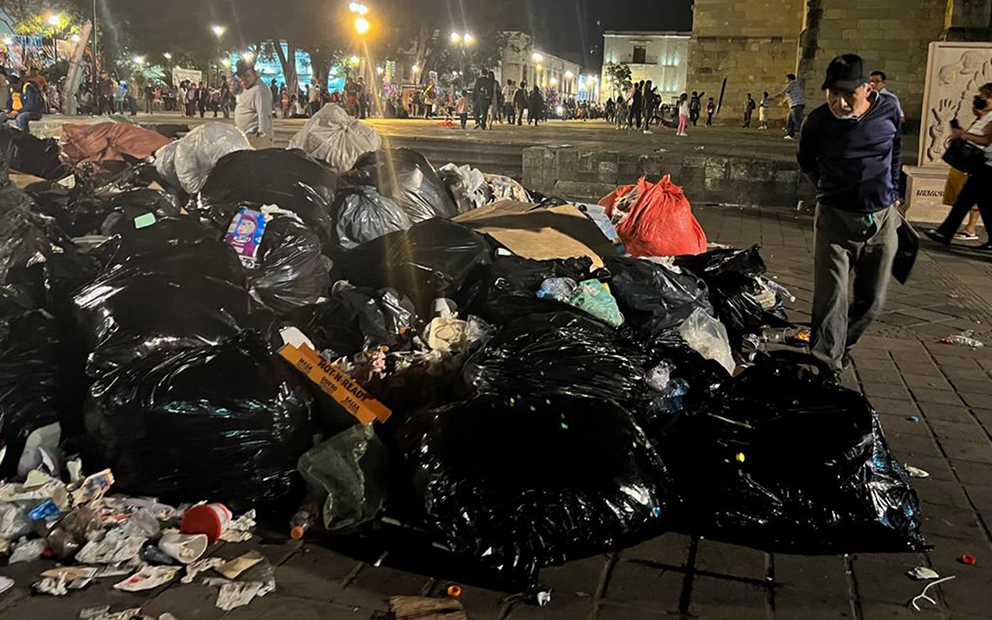A mural depicts over 100 years of anarchist, Indigenous, feminist, campesino and workers’ social struggles… In one of Mexicali’s most conservative neighbourhoods.
Text and photos: Alejandro Ruiz, originally published June 12, 2021.
In memory of Sergio Haro Cordero, Delia Valdivia, José Fierro, Gema López Limón, Javier Salivie Astengo “pitufo” and Pedro González.
MEXICALI, BAJA CALIFORNIA–Along the border, heavy bars mark the line that divides Mexican territory with the United States. A barricade of sorts is set up along the US side, in front of border patrol checkpoints that overlook the border and the city of Mexicali.
The checkpoint at Calexico is a few kilometers away. There, estimates are that 15,000 vehicles crossed every day, at least before the US closed its border to stop the spread of Covid-19.
Days earlier, a colleague from Tijuana explained the interrelation between the border state of Baja California and the United States. In addition to assembling merchandise in the last few meters of Mexican territory in the north, thousands of people come and go to the “other side” every day, shattering the illusion of a border that marks the beginning and the end of a country.
“We’re very far from the centralism of this country, and it’s clear that that influences our political life. The relationship with the US is, to a certain extent, one of codependency; the myth of empire crumbles easily here,” said my colleague.
Labor exploitation in maquilas, a transient population, migration, dollarized life, organized crime and drug use are issues that are shared between Baja California’s two border cities, Tijuana and Mexicali.
Regardless, you can sense the difference between the two cities as soon as you traverse La Rumorosa. “It’s as if Tijuana was the bad brother, and Mexicali the good one,” said my colleague. “In reality, the first is more liberal and the second, very conservative.
That said, in 2017 the people of Mexicali managed to stop the water law proposed by the ex-governor “Kiko” Vega after more than 60,000 people took to the streets and took over the state government building for months.
In Rancho Mena, residents of Mexicali faced off with state police who were overseeing the construction of an aqueduct that was to supply Constellation Brands’ brewery. Two years later, through a citizens consultation, 28,000 people threw out the brewery.
“Mexicali is tough,” I thought, and it’s history should be told through its protagonists.
Luckily, artists Elena Katzenstein and Mauricio Villa took on that task, and together with diverse expressions of Mexicali’s social movement, created a mural that revives the struggles that have, over more than a century, formed part of Mexicali’s deep historical memory.
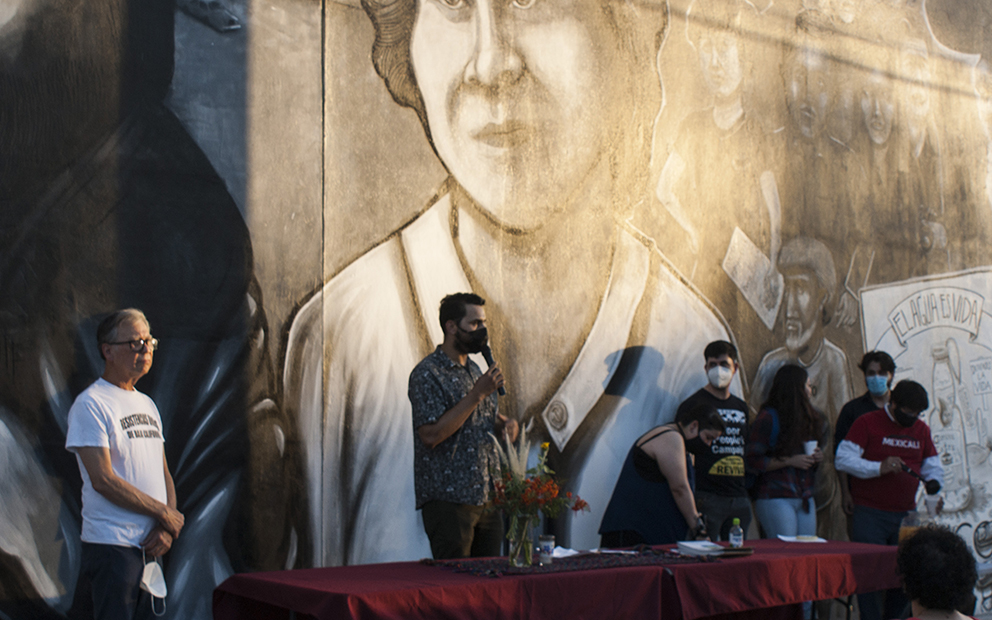
An anarchocommunist and Indigenous mural in the most PANista neighborhood of Mexicali
Right near the Institute of Cultural investigations & Museum (IIC) of the Autonomous University of Baja California, the face of Margarita Ortega Valdés looks off towards the conservative families who lives in Colonia Nueva, one of the electoral bastions of the right wing National Action Party in Mexicali.
Margarita Ortega Valdés was an anarchocommunist woman who joined the ranks of the Mexical Liberal Party (PLM) and participated in PLM actions to overthrow Porfirio Díaz, including in the “Occupation of Mexicali.”
Beside the face of Margarita is a group of Cucapás, Pai Pais and Kiliwas gathered around Cucapá leader Camilo Jiménez, mounted on their horses to fight alongside the PLM forces.
“It’s funny that the face of Margarita is in this neighborhood,” said Iván Martínez, a young journalist from Mexicali who has participated in struggles in defense of land since 2017 and who helped carry out the historical research toward the realization of the mural.
“We got this space by applying to a call out from the UABC, the design that we proposed was different from what we ended up doing, but it turned out even more chilo (cool),” he said.
The walls of the IIC tell the history of one of the most strategic cities of the country: not only is the city a point of entrance and exit of commodities going north, in addition, within its territory the Hardy, Colorado and Nuevo rivers meet. These rivers have constantly been disputed with the United States, as in historic protests known as “the struggle against salinity” in the latter half of the 20th Century, against illegal discharges of salt into the Colorado River on the part of US companies.
The silhouettes of rural farmers fighting beside the river represent that historic moment.
As we walked along the painted walls, we saw images of farmers fighting landowners, which represent the “assault on the land” the Cachanilla people faced in the 1930s when the Colorado River Land Company occupied the lands of the Valley of Mexicali.
“Here, Cardenismo was very popular,” said Ivan. “After the ‘land assaults,’ Cárdenas expropriated agricultural lands from the gringos and gave them to peasant farmers.”
One factor that these struggles have in common is that most of them take place between the months of December and January, which is why the “January rebellion” isn’t a spontaneous choice of names for the mural, which brings together the left in Mexicali.
The “January Rebellions”: 110 years of Cachanilla struggle
Marxists, Zapatistas, feminists, grassroots religious communities, journalists, environmental activists, and old time university leaders began to gather under the faces along the more than 10 meters of mural, which depict history “from below” in this northern border city.
Baltazar Macías, who participated in the UABC strike in 1980 and 1981, stood in front of a microphone and began to address the crowd as people arrived.
“I don’t see Castro Bojórquez here, history is written by the winners, and here we are: we won!” said the retired university professor as he recalled some of the antics of him and his compañeros during the strike in the 1980s, which was harshly repressed by the ex-rector of the UABC, Gerardo Castro Bojórquez.
Today, Bojórquez is remembered as a tyrant.
Behind Baltazar, the faces of popular, student and union leaders look towards the horizon that was opened up through the “January rebellions.”
These are the faces of the men and women who, from their own spaces of struggle, marked the history of resistance in Mexicali, their names are ones that younger and older generations refuse to forget, and that today wait, patiently, for the dreams that moved them to struggle to be realized.
These dreams co-exist and are expressed by the hundreds of thousands of people who have demonstrated that together they can bring down governors, megaprojects, and defend their land. Today they are building, from factories, classrooms, and popular neighborhoods, the social base that will, one day, take over the sky.
Struggles for affordable housing for maquila workers, together with the intellectual, political and feminist movements that came out of the strike in the 1980s have been joined, in this mural, with campesino, union and popular struggles which have defined the political history of Baja California for more than 40 years.
The impetus of the new generations that have gathered in defense of water can’t be explained without the teachings of these political leaders from the generation prior, who laid the foundations of the popular uprising in the border city.
“This is our history and we honour it through struggle,” said one speaker into the microphone. Those who a few years ago led one of the strongest popular movements in national history clapped, confirming that historical memory in Mexicali is alive and well.
As protest songs washed over the gathering of collectives, organizations and militants from diverse currents of the left, one phrase in particular lifted up among those present.
“Mexicali keeps resisting, and that’s how we’ll honour our compañeros.”
Alejandro Ruíz is an independent journalist based in the city of Querétaro. He believes in the stories that allow for us to open spaces of reflection, discussion and collective creation, with the belief that other worlds are possible if we build them from below.
Click here to join Pie de Página’s bi-weekly English newsletter.
Ayúdanos a sostener un periodismo ético y responsable, que sirva para construir mejores sociedades. Patrocina una historia y forma parte de nuestra comunidad.
Dona


